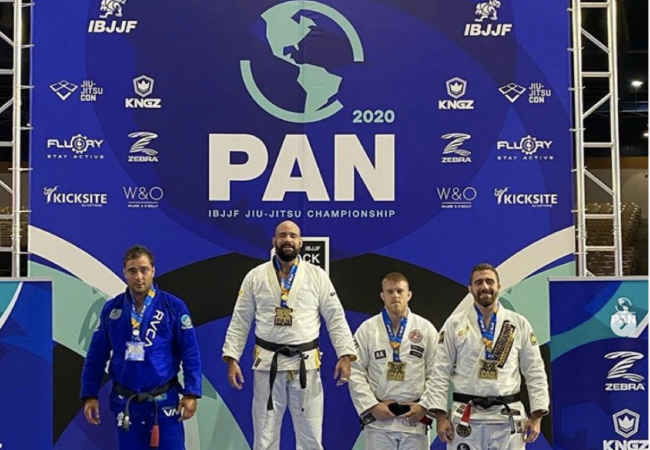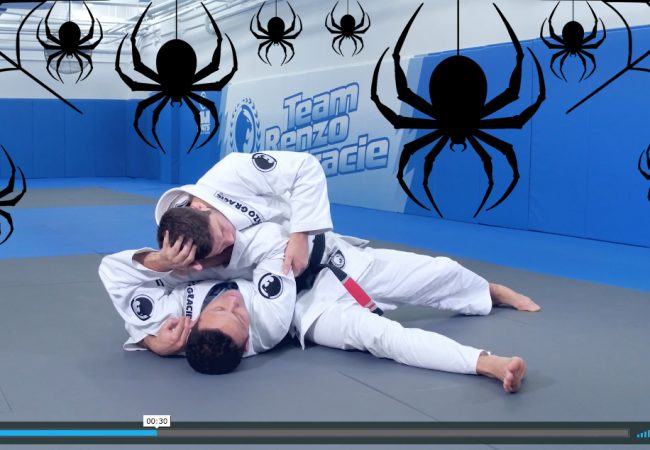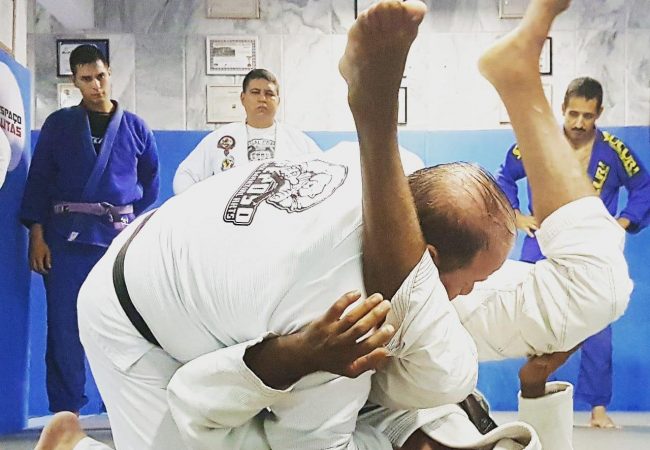[First published in 2016. Scroll all the way down for plain text.]
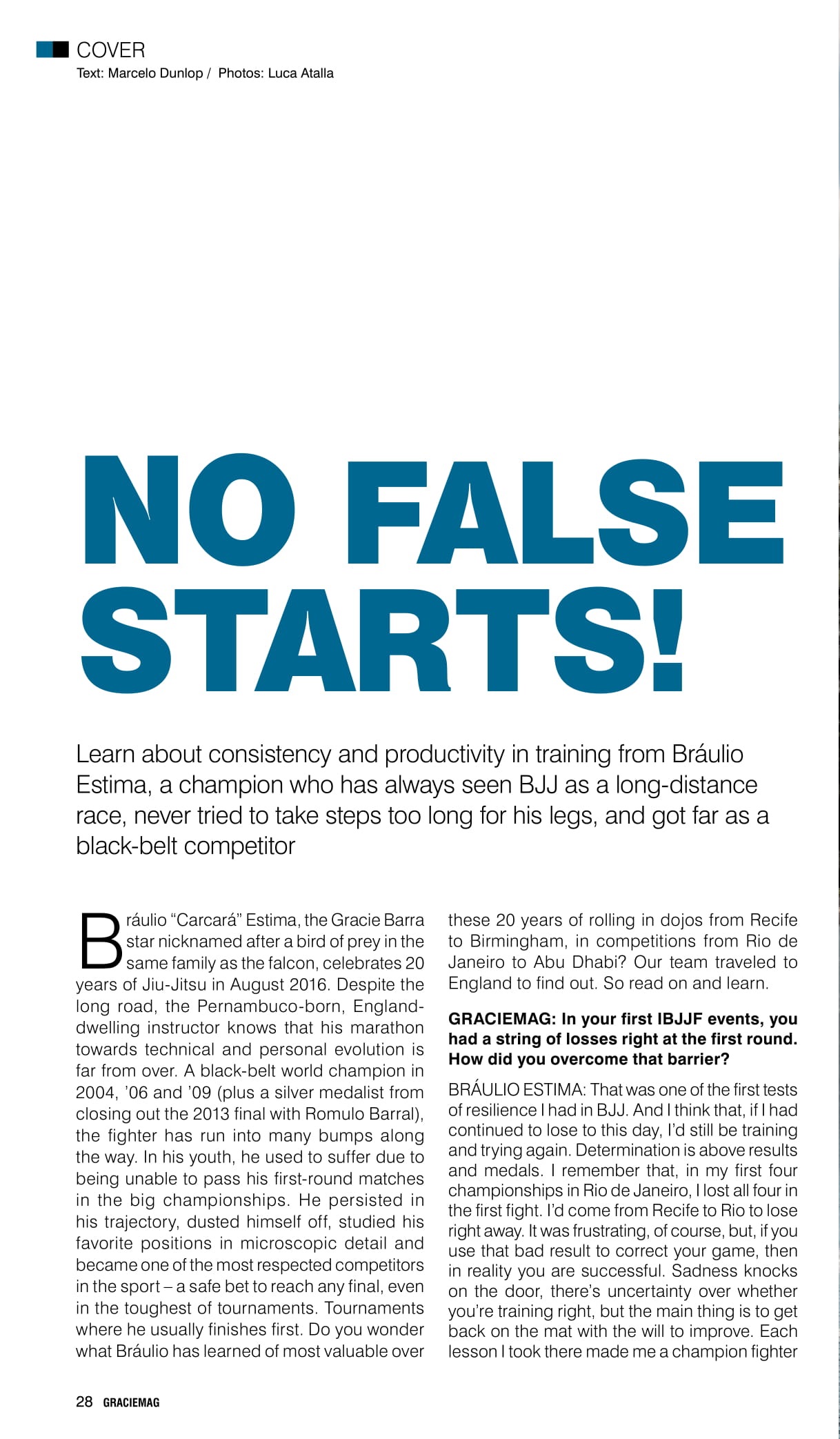
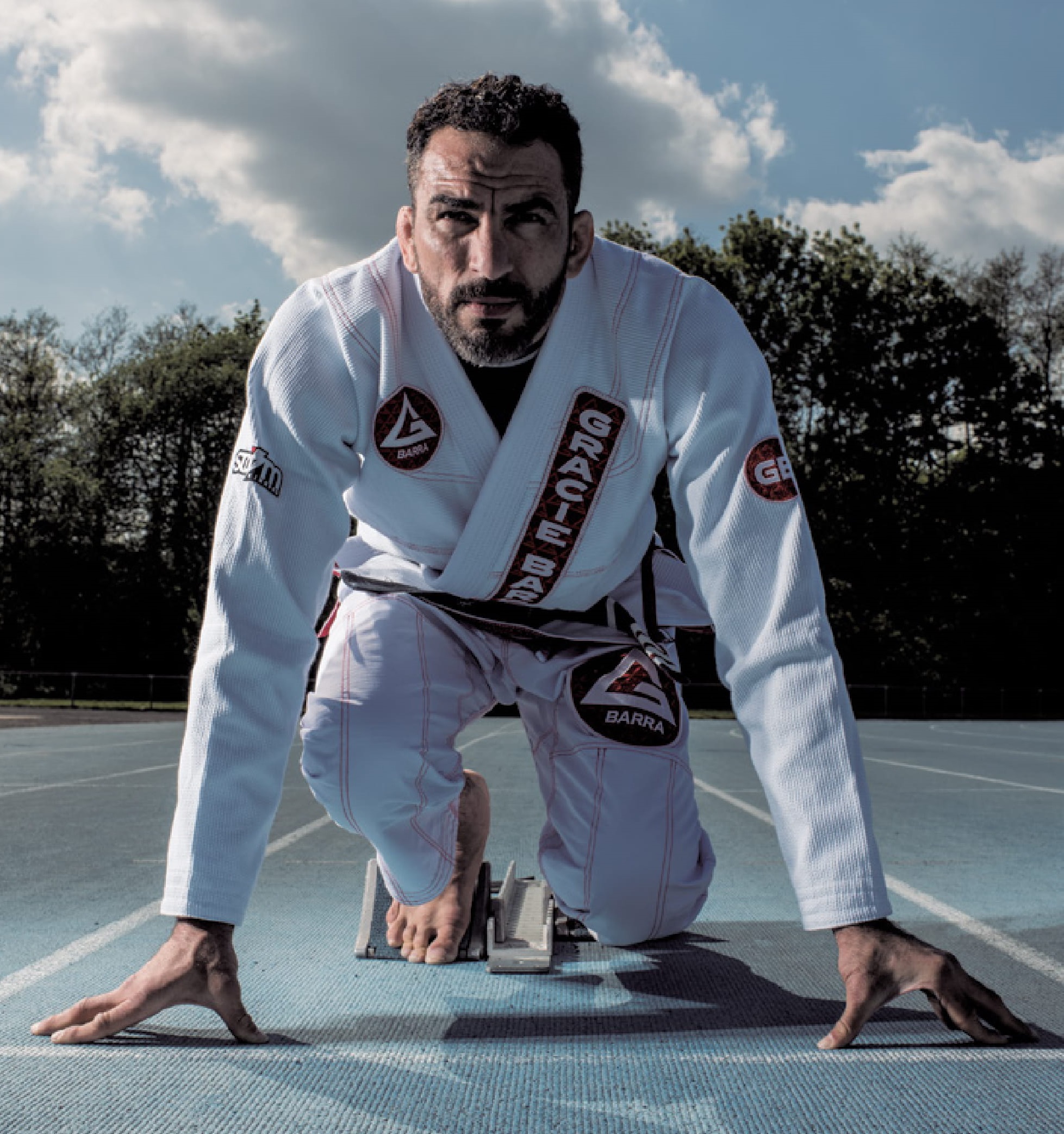
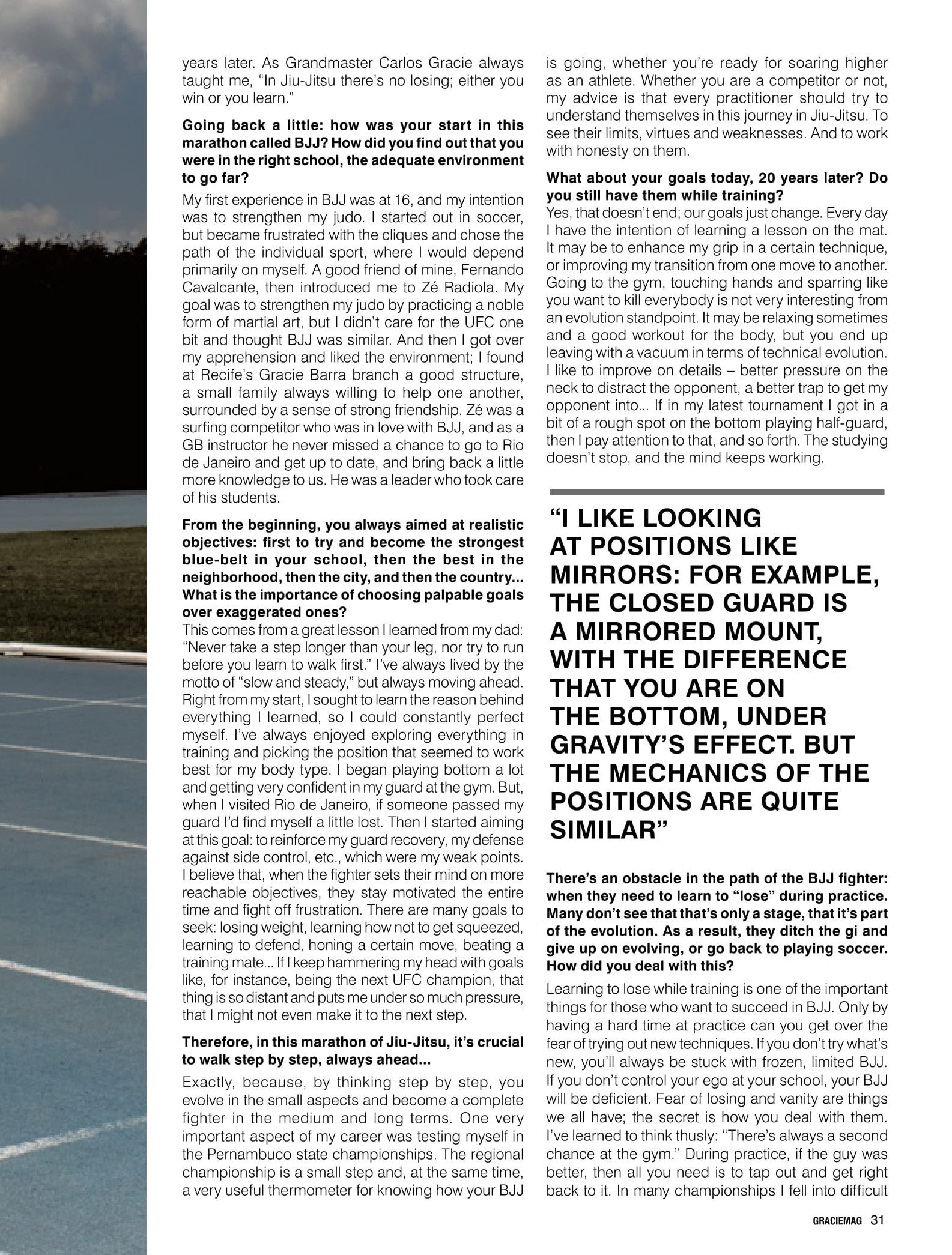
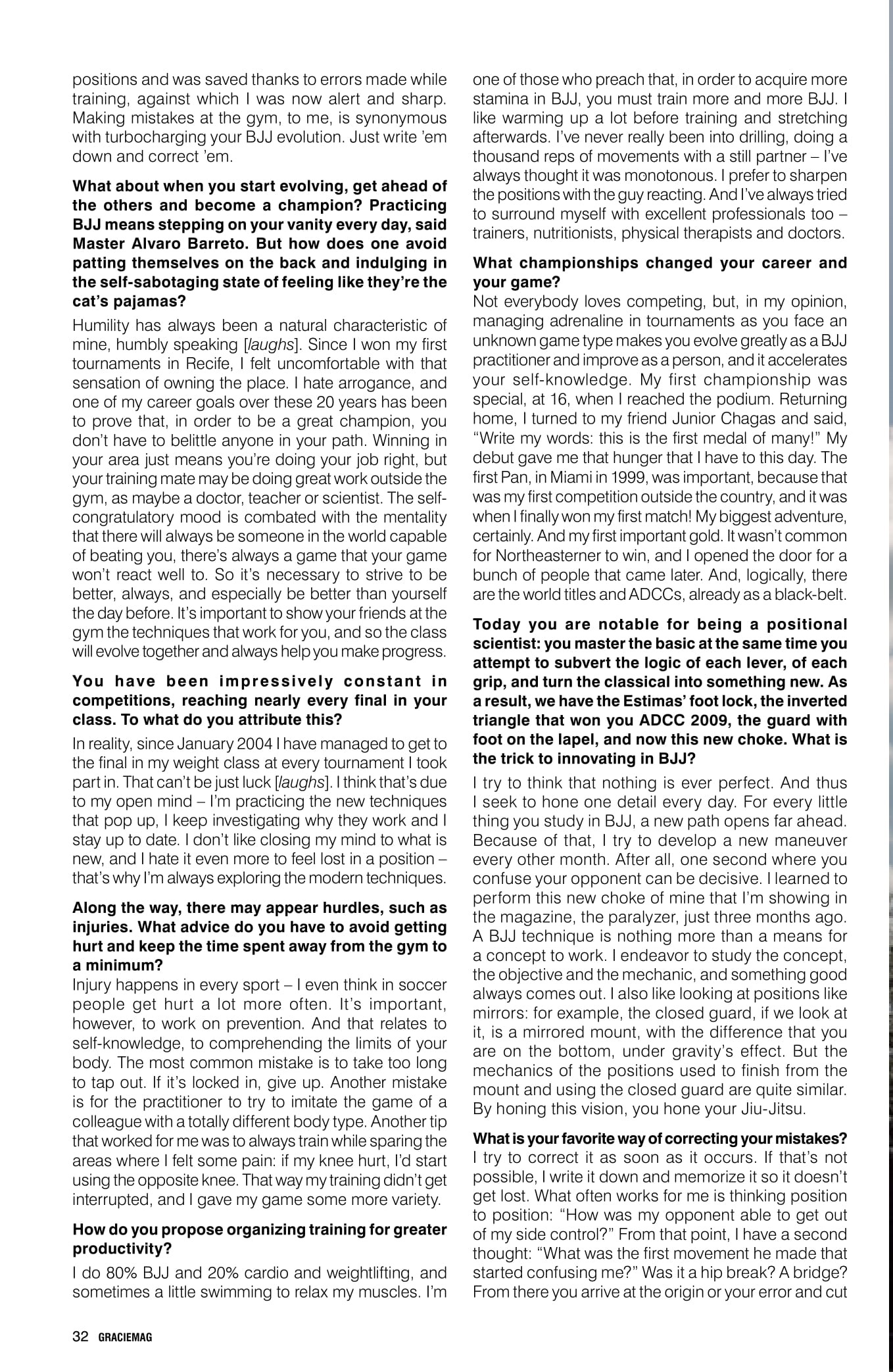
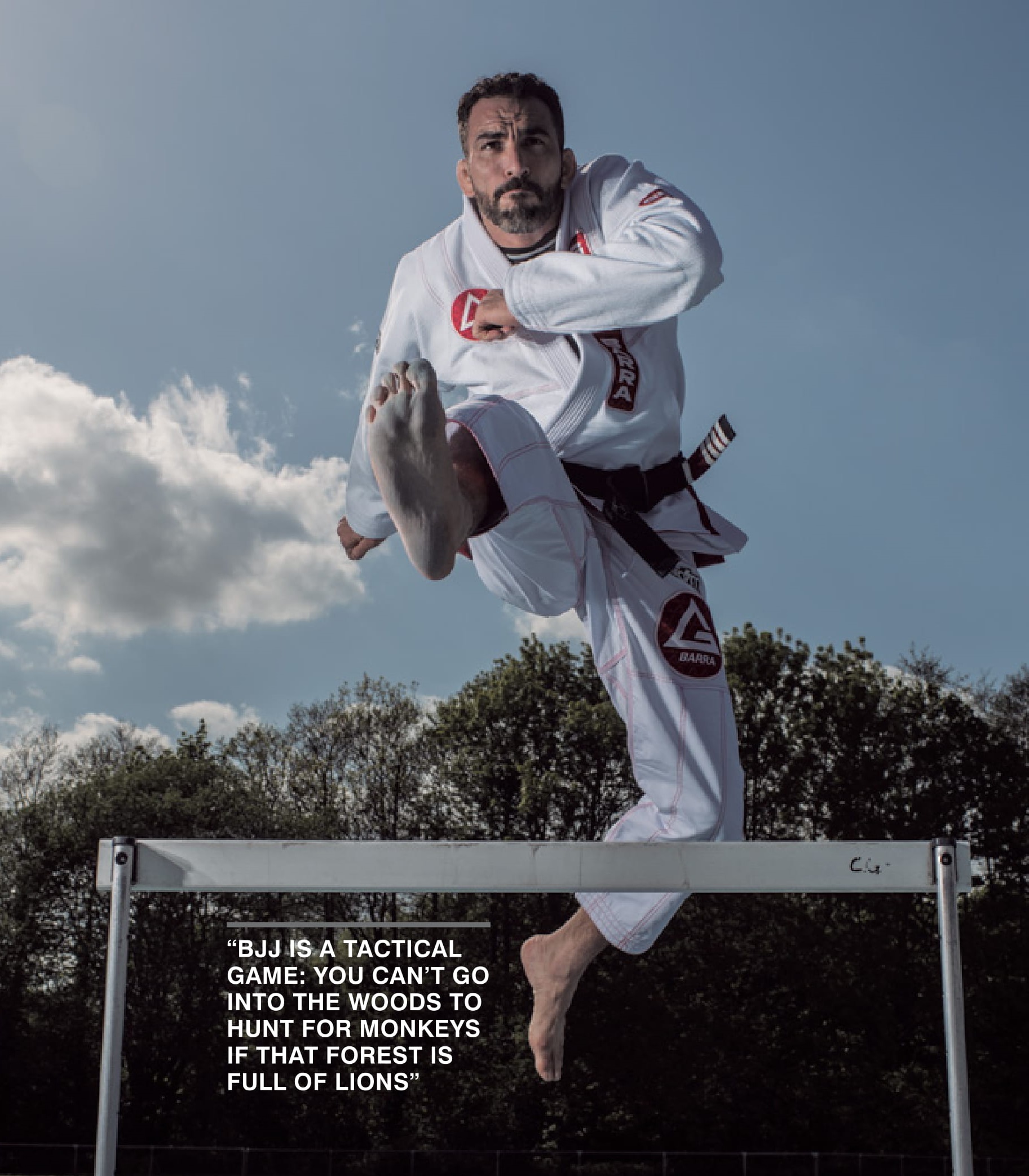
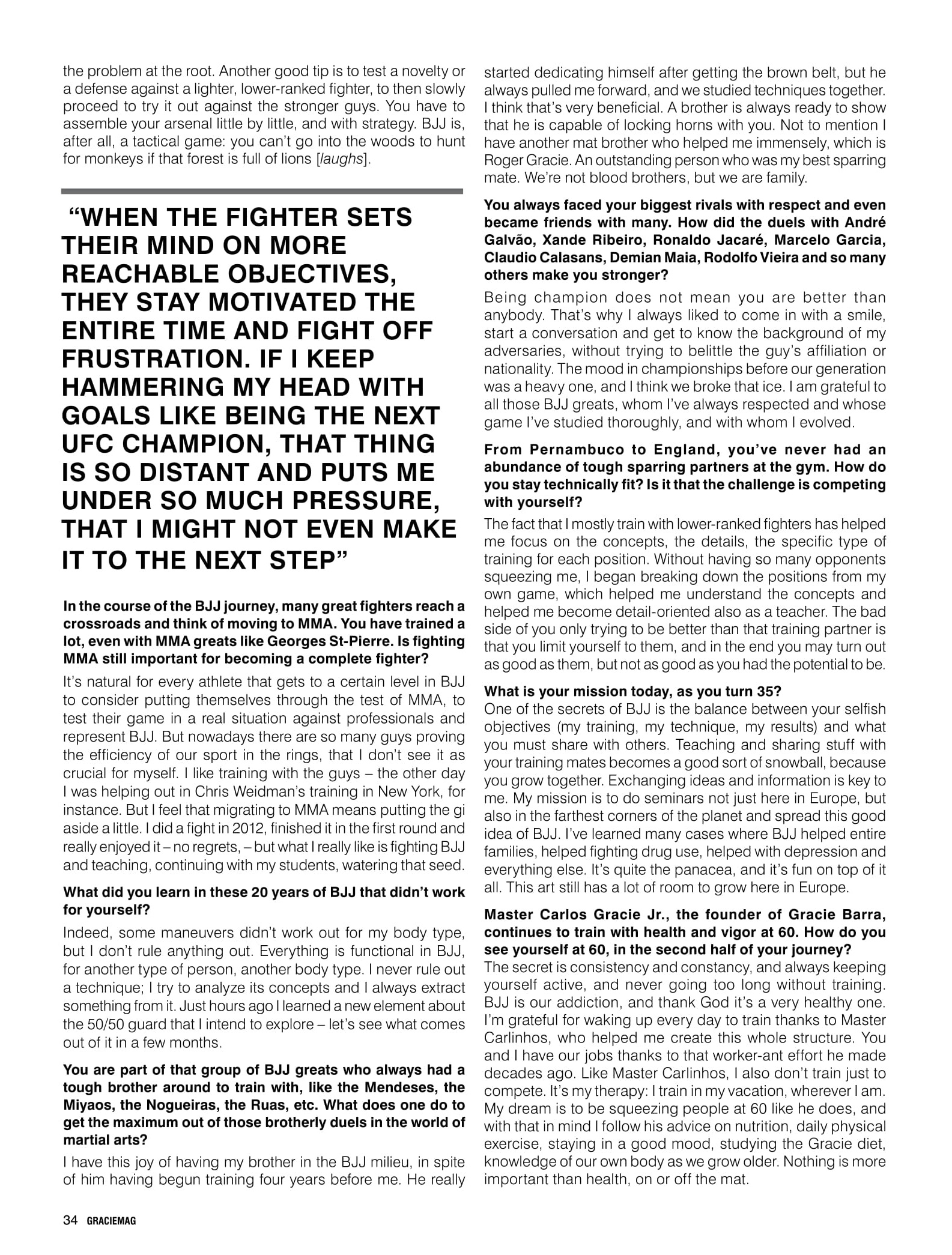
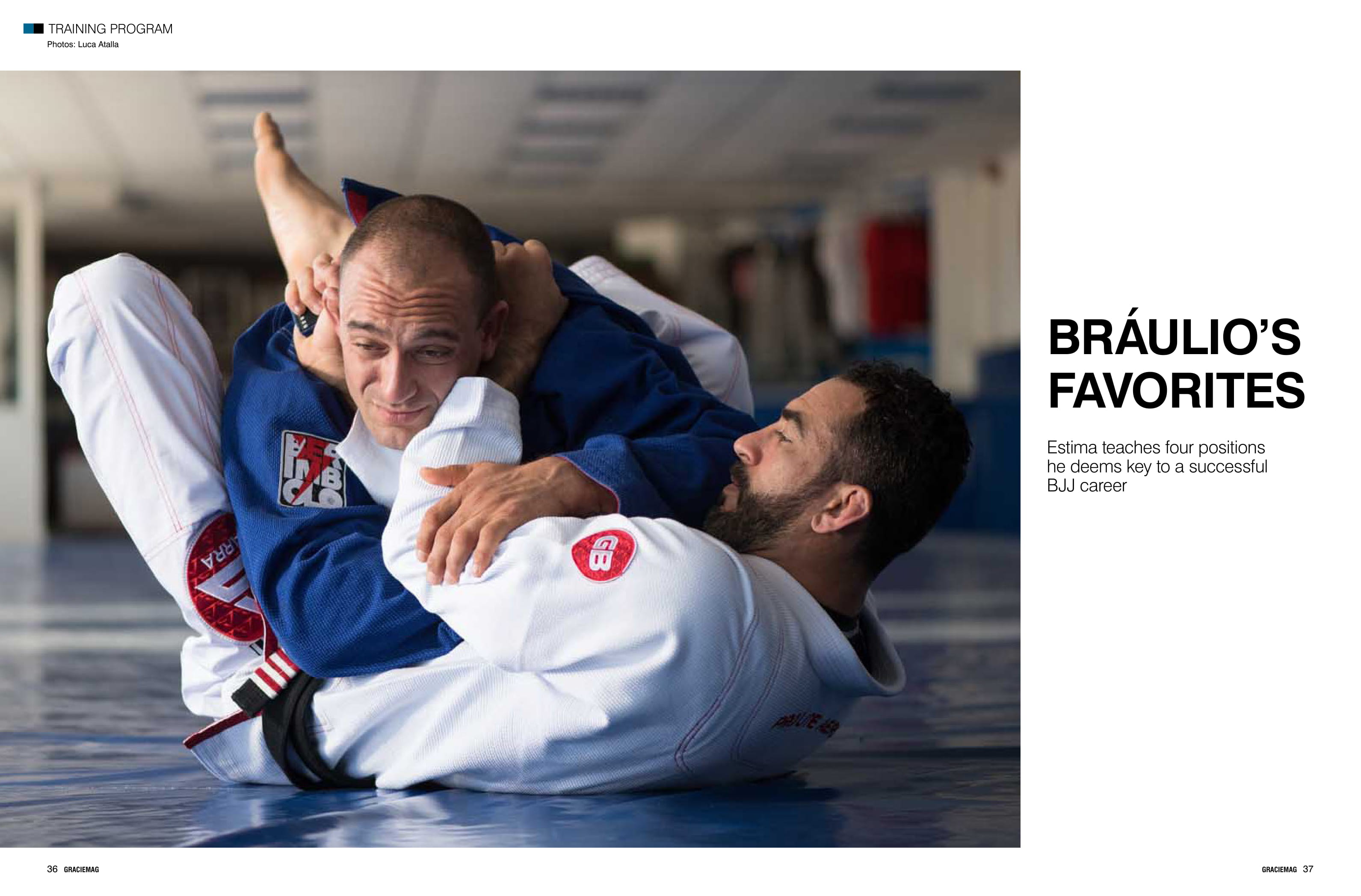

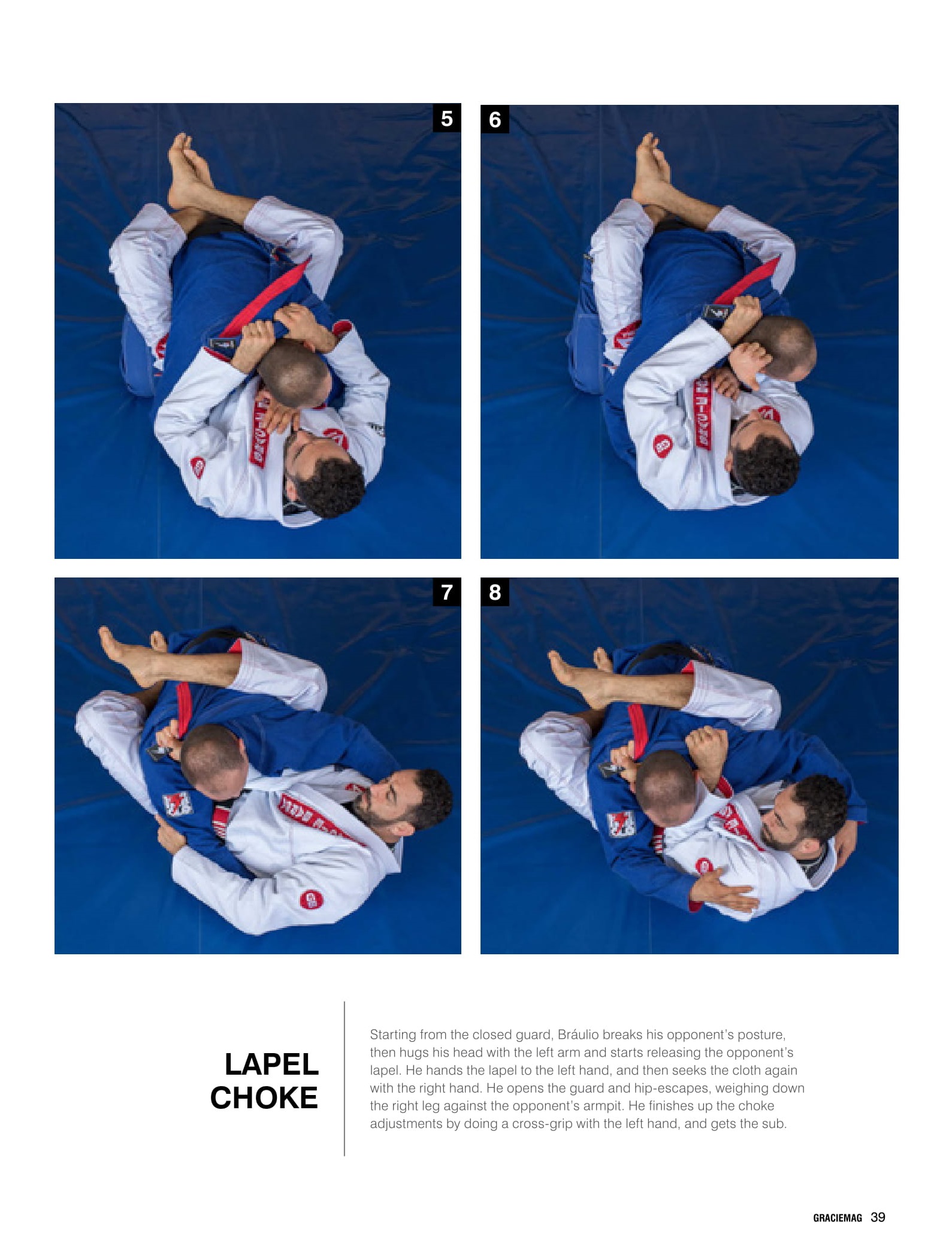
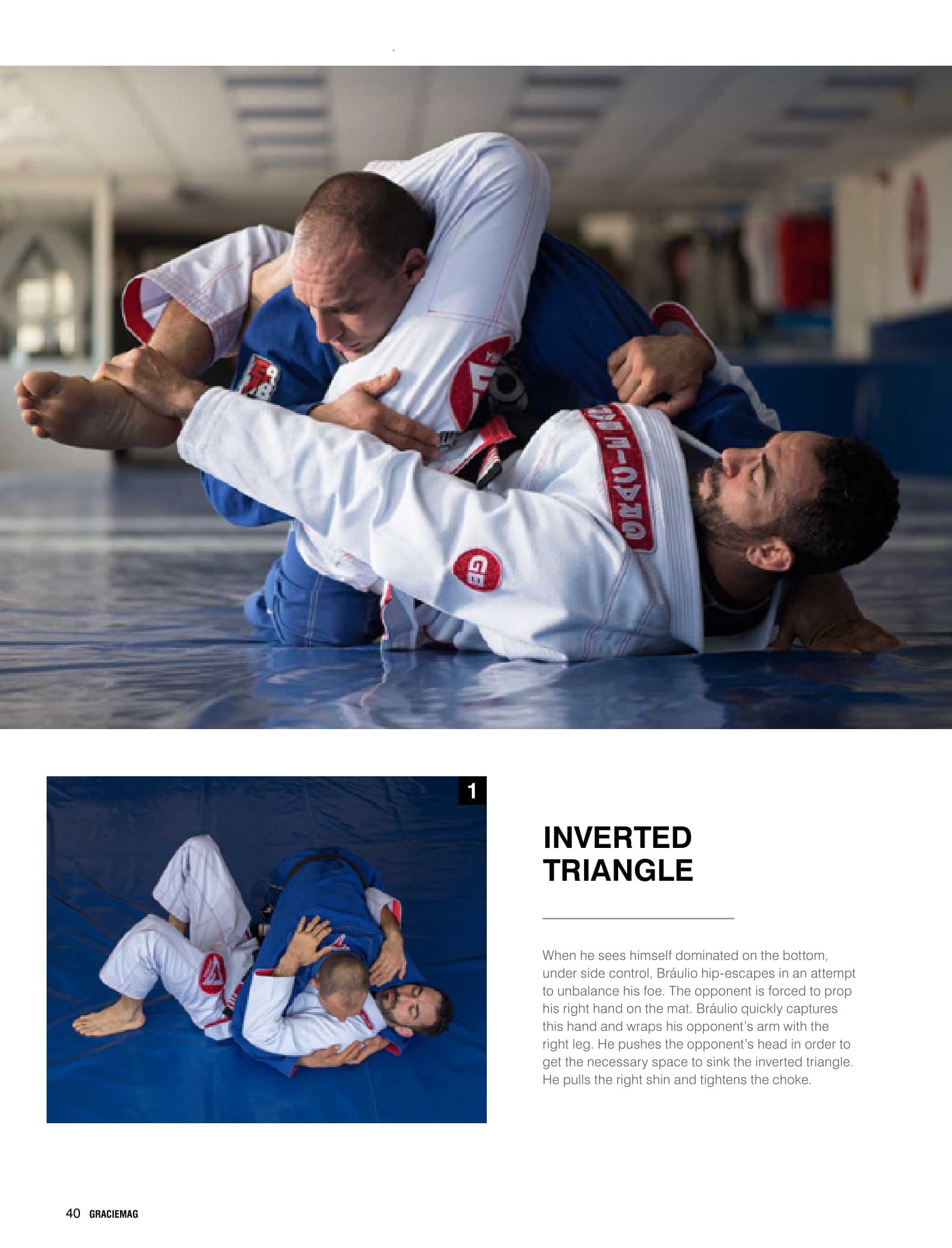
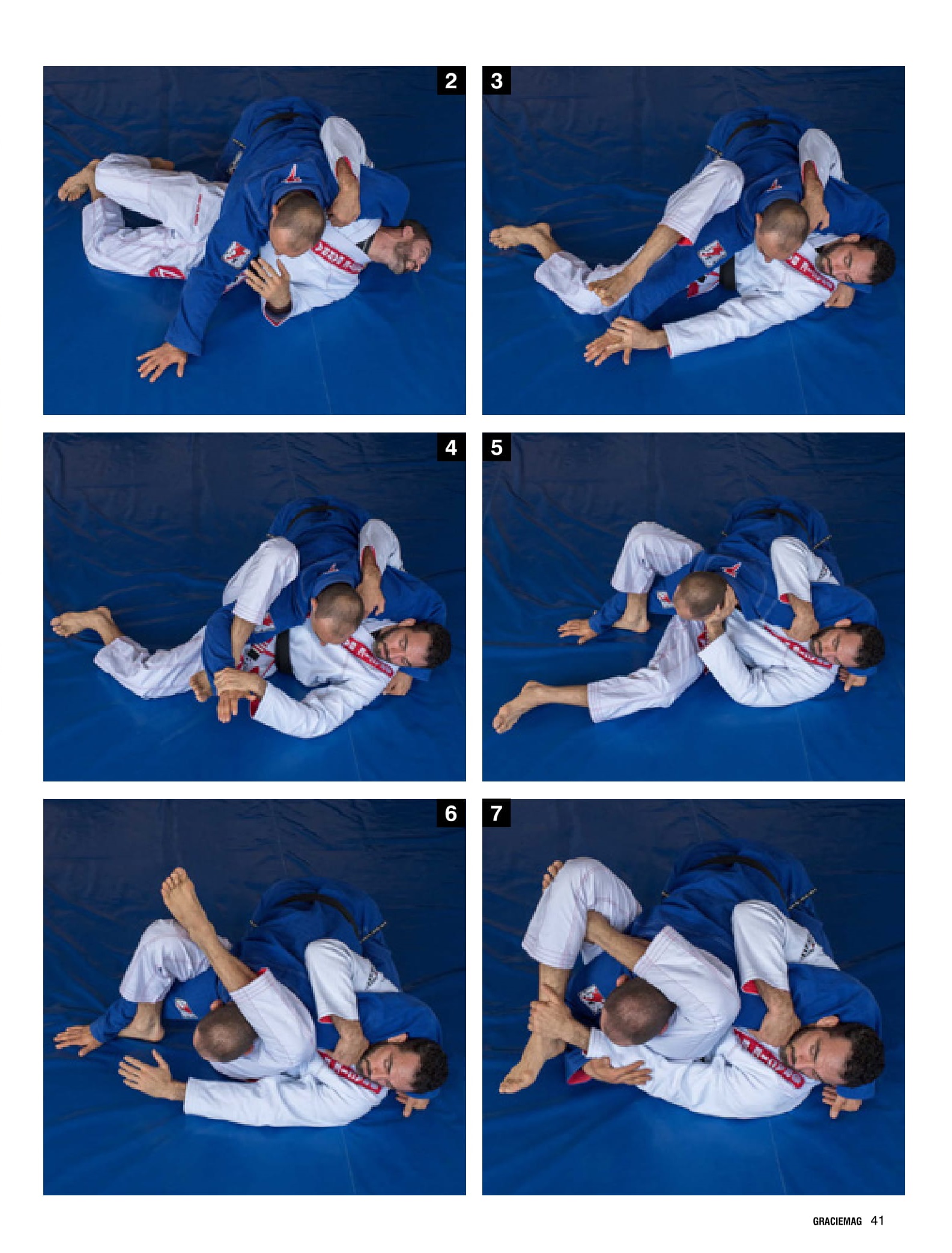
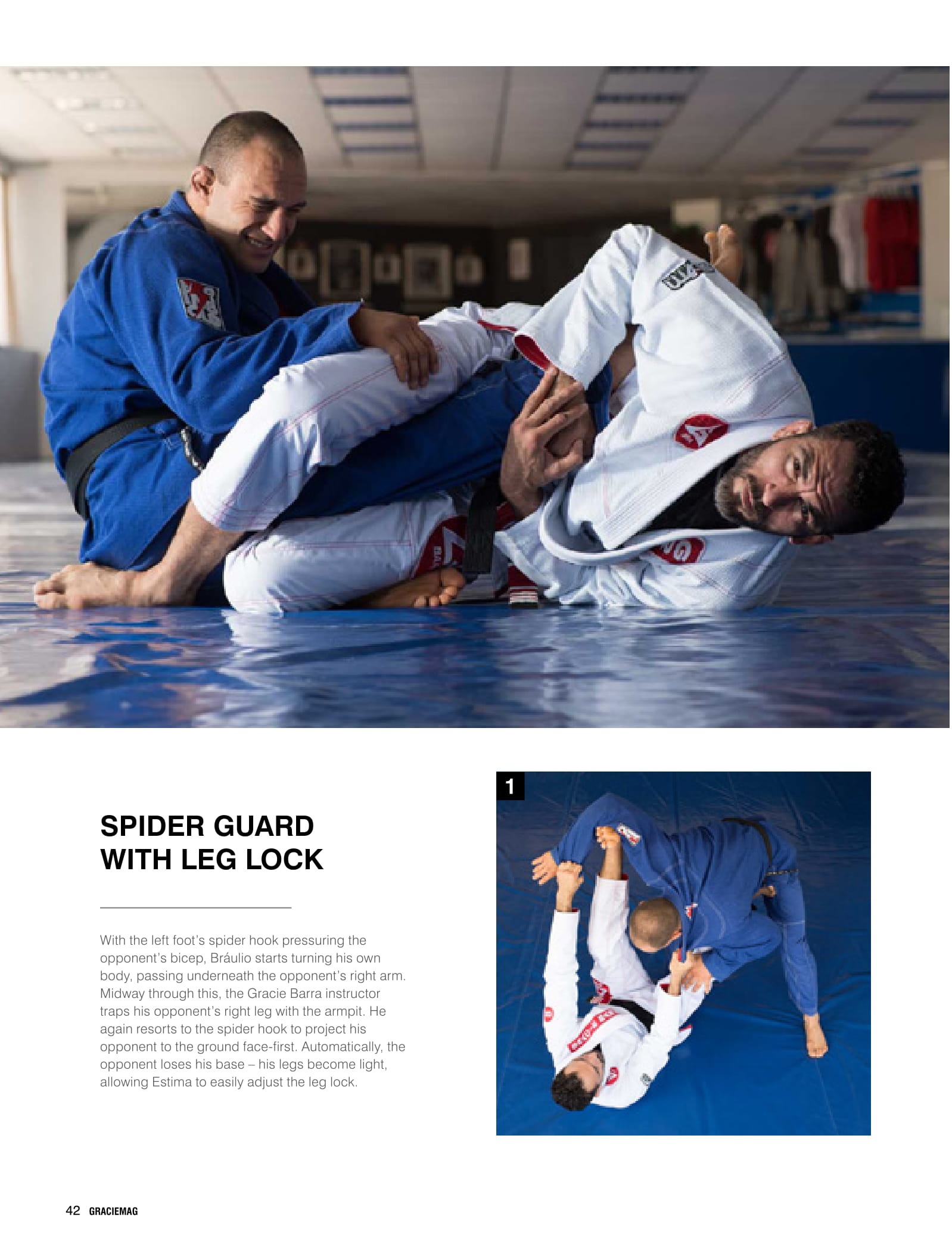
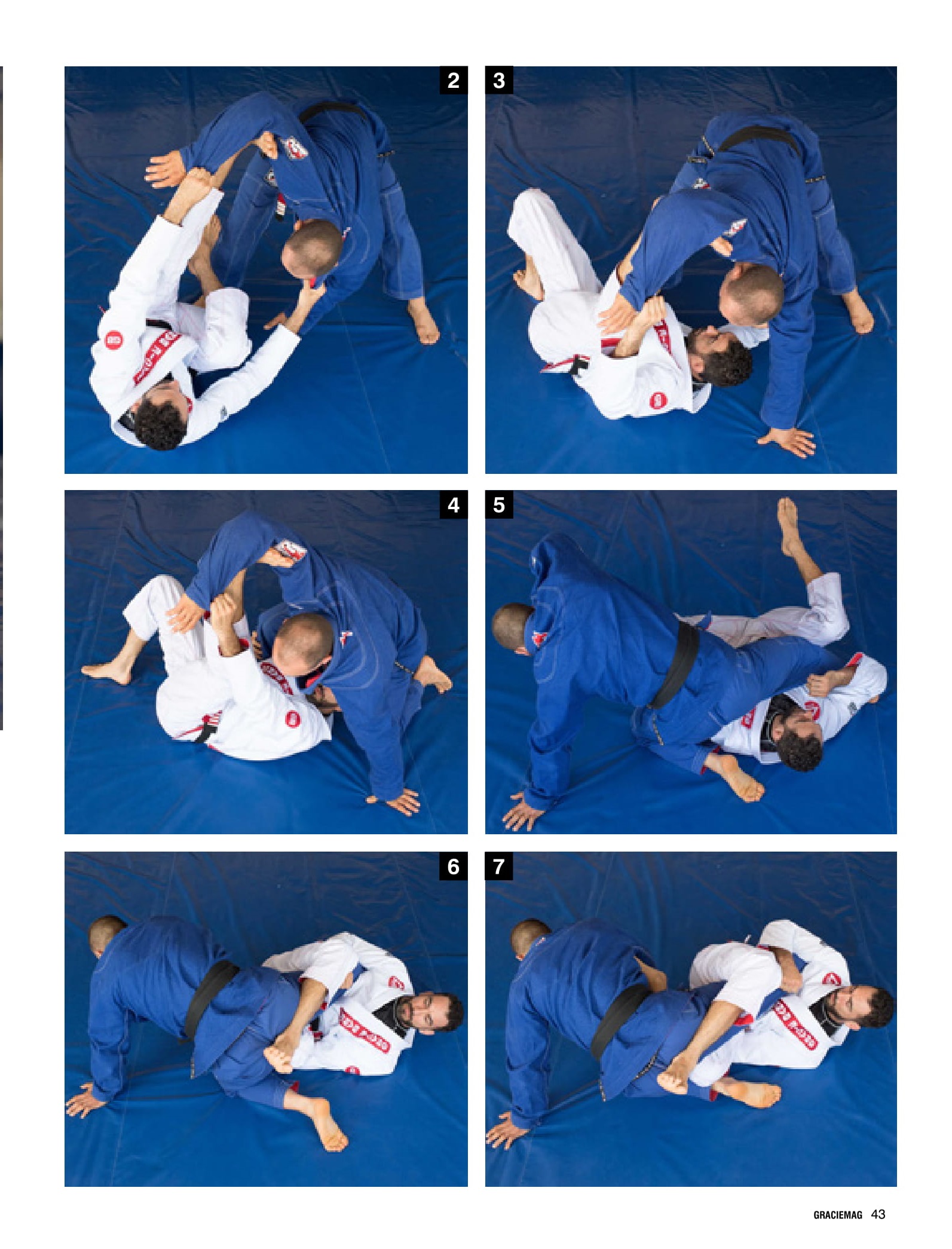
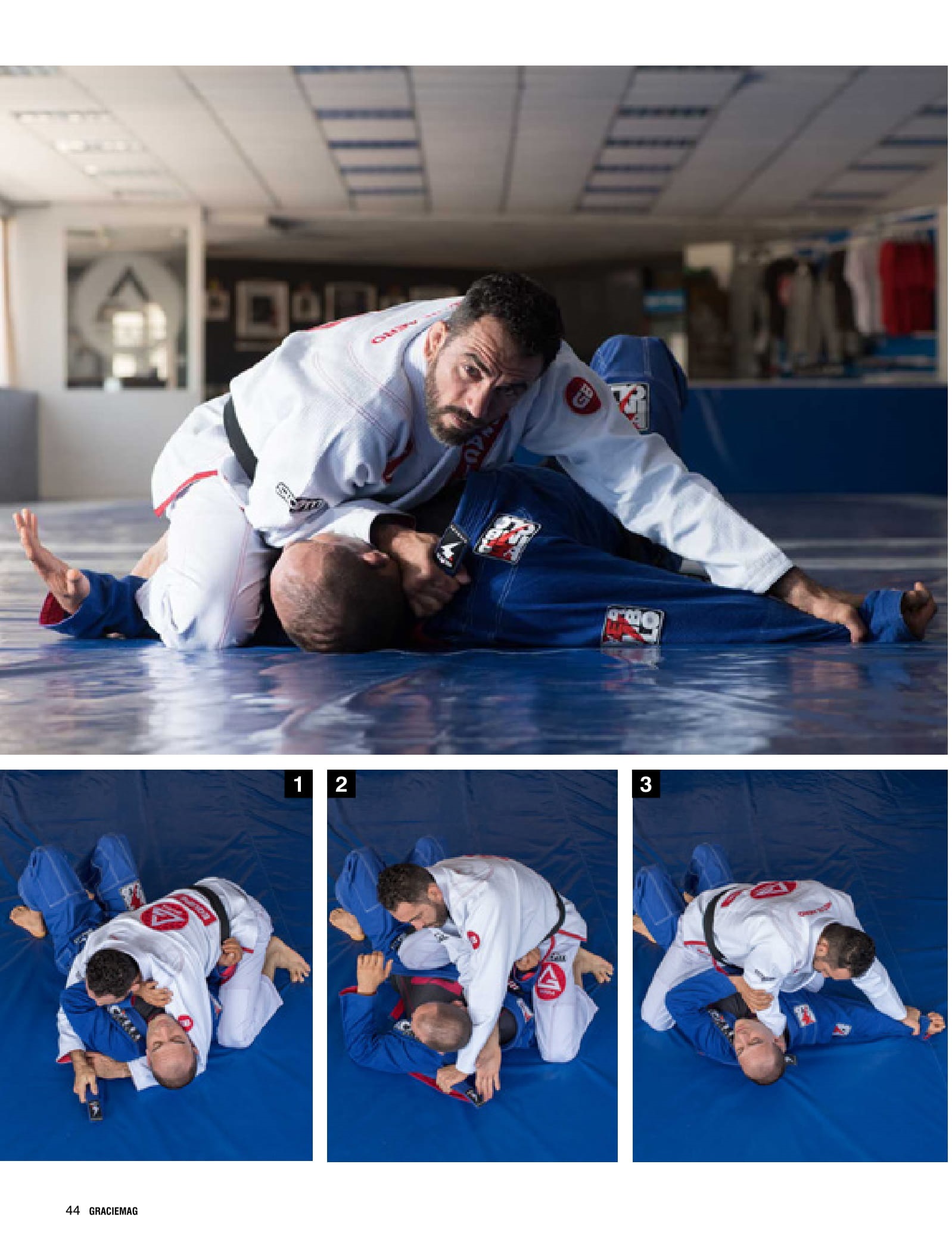
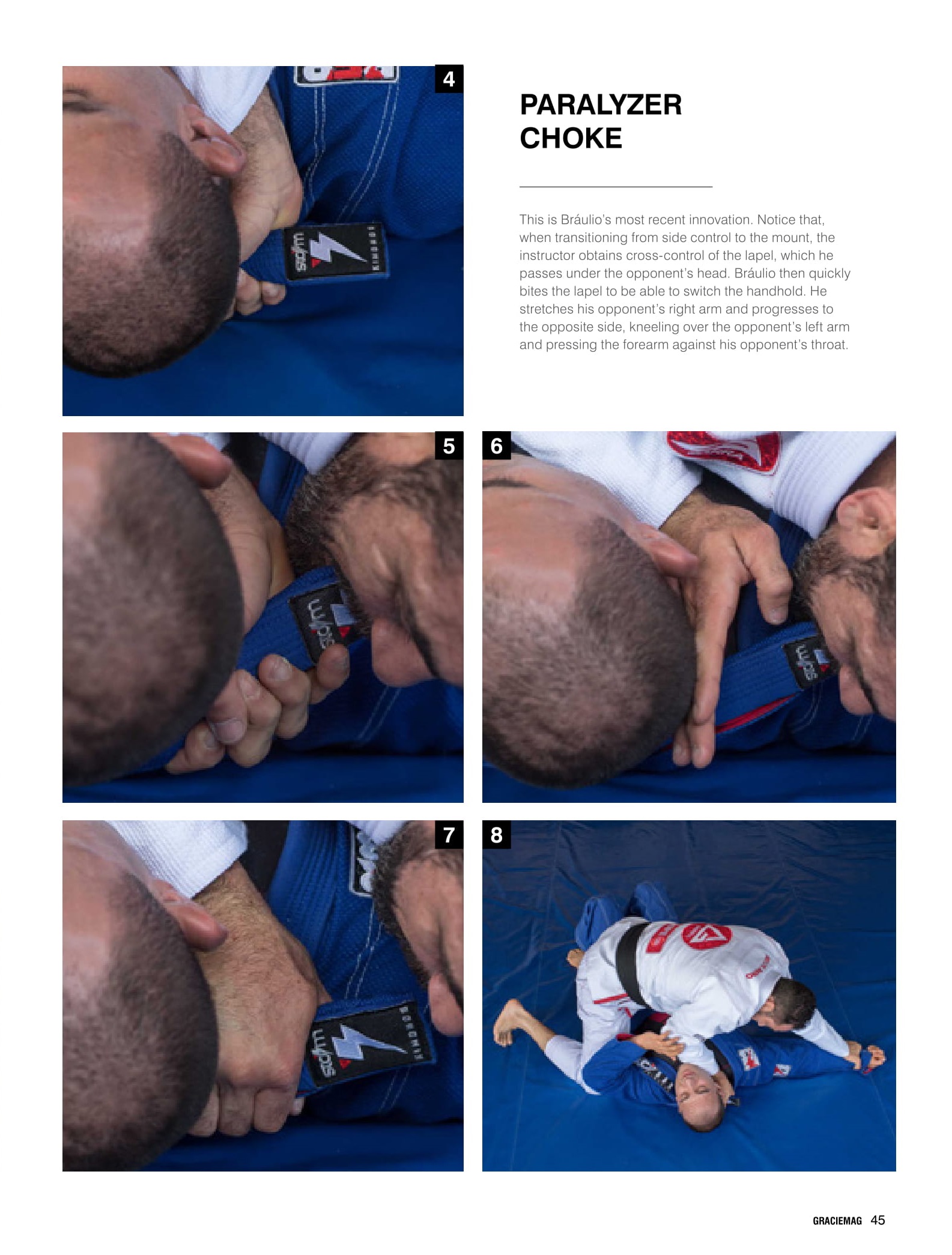
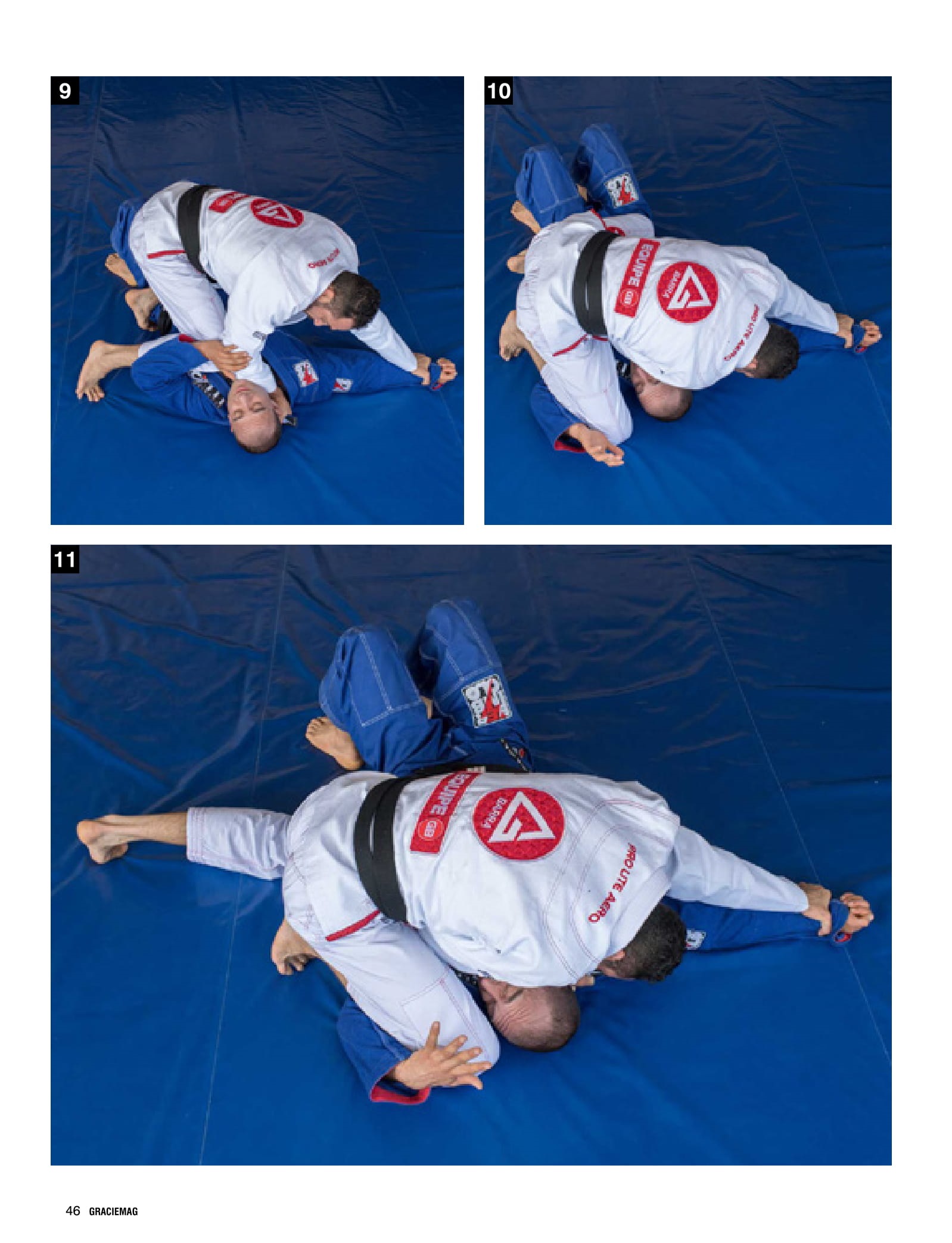
Bráulio “Carcará” Estima, the Gracie Barra
star nicknamed after a bird of prey in the
same family as the falcon, celebrates 20
years of Jiu-Jitsu in August 2016. Despite the
long road, the Pernambuco-born, England-dwelling
instructor knows that his marathon
towards technical and personal evolution is
far from over. A black-belt world champion in
2004, ’06 and ’09 (plus a silver medalist from
closing out the 2013 final with Romulo Barral),
the fighter has run into many bumps along
the way. In his youth, he used to suffer due to
being unable to pass his first-round matches
in the big championships. He persisted in
his trajectory, dusted himself off, studied his
favorite positions in microscopic detail and
became one of the most respected competitors
in the sport – a safe bet to reach any final, even
in the toughest of tournaments. Tournaments
where he usually finishes first. Do you wonder
what Bráulio has learned of most valuable over
these 20 years of rolling in dojos from Recife
to Birmingham, in competitions from Rio de
Janeiro to Abu Dhabi? Our team traveled to
England to find out. So read on and learn.
GRACIEMAG: In your first IBJJF events, you
had a string of losses right at the first round.
How did you overcome that barrier?
BRÁULIO ESTIMA: That was one of the first tests
of resilience I had in BJJ. And I think that, if I had
continued to lose to this day, I’d still be training
and trying again. Determination is above results
and medals. I remember that, in my first four
championships in Rio de Janeiro, I lost all four in
the first fight. I’d come from Recife to Rio to lose
right away. It was frustrating, of course, but, if you
use that bad result to correct your game, then
in reality you are successful. Sadness knocks
on the door, there’s uncertainty over whether
you’re training right, but the main thing is to get
back on the mat with the will to improve. Each
lesson I took there made me a champion fighter
years later. As Grandmaster Carlos Gracie always
taught me, “In Jiu-Jitsu there’s no losing; either you
win or you learn.”
Going back a little: how was your start in this
marathon called BJJ? How did you find out that you
were in the right school, the adequate environment
to go far?
My first experience in BJJ was at 16, and my intention
was to strengthen my judo. I started out in soccer,
but became frustrated with the cliques and chose the
path of the individual sport, where I would depend
primarily on myself. A good friend of mine, Fernando
Cavalcante, then introduced me to Zé Radiola. My
goal was to strengthen my judo by practicing a noble
form of martial art, but I didn’t care for the UFC one
bit and thought BJJ was similar. And then I got over
my apprehension and liked the environment; I found
at Recife’s Gracie Barra branch a good structure,
a small family always willing to help one another,
surrounded by a sense of strong friendship. Zé was a
surfing competitor who was in love with BJJ, and as a
GB instructor he never missed a chance to go to Rio
de Janeiro and get up to date, and bring back a little
more knowledge to us. He was a leader who took care
of his students.
From the beginning, you always aimed at realistic
objectives: first to try and become the strongest
blue-belt in your school, then the best in the
neighborhood, then the city, and then the country…
What is the importance of choosing palpable goals
over exaggerated ones?
This comes from a great lesson I learned from my dad:
“Never take a step longer than your leg, nor try to run
before you learn to walk first.” I’ve always lived by the
motto of “slow and steady,” but always moving ahead.
Right from my start, I sought to learn the reason behind
everything I learned, so I could constantly perfect
myself. I’ve always enjoyed exploring everything in
training and picking the position that seemed to work
best for my body type. I began playing bottom a lot
and getting very confident in my guard at the gym. But,
when I visited Rio de Janeiro, if someone passed my
guard I’d find myself a little lost. Then I started aiming
at this goal: to reinforce my guard recovery, my defense
against side control, etc., which were my weak points.
I believe that, when the fighter sets their mind on more
reachable objectives, they stay motivated the entire
time and fight off frustration. There are many goals to
seek: losing weight, learning how not to get squeezed,
learning to defend, honing a certain move, beating a
training mate… If I keep hammering my head with goals
like, for instance, being the next UFC champion, that
thing is so distant and puts me under so much pressure,
that I might not even make it to the next step.
Therefore, in this marathon of Jiu-Jitsu, it’s crucial
to walk step by step, always ahead…
Exactly, because, by thinking step by step, you
evolve in the small aspects and become a complete
fighter in the medium and long terms. One very
important aspect of my career was testing myself in
the Pernambuco state championships. The regional
championship is a small step and, at the same time,
a very useful thermometer for knowing how your BJJ
is going, whether you’re ready for soaring higher
as an athlete. Whether you are a competitor or not,
my advice is that every practitioner should try to
understand themselves in this journey in Jiu-Jitsu. To
see their limits, virtues and weaknesses. And to work
with honesty on them.
What about your goals today, 20 years later? Do
you still have them while training?
Yes, that doesn’t end; our goals just change. Every day
I have the intention of learning a lesson on the mat.
It may be to enhance my grip in a certain technique,
or improving my transition from one move to another.
Going to the gym, touching hands and sparring like
you want to kill everybody is not very interesting from
an evolution standpoint. It may be relaxing sometimes
and a good workout for the body, but you end up
leaving with a vacuum in terms of technical evolution.
I like to improve on details – better pressure on the
neck to distract the opponent, a better trap to get my
opponent into… If in my latest tournament I got in a
bit of a rough spot on the bottom playing half-guard,
then I pay attention to that, and so forth. The studying
doesn’t stop, and the mind keeps working.
There’s an obstacle in the path of the BJJ fighter:
when they need to learn to “lose” during practice.
Many don’t see that that’s only a stage, that it’s part
of the evolution. As a result, they ditch the gi and
give up on evolving, or go back to playing soccer.
How did you deal with this?
Learning to lose while training is one of the important
things for those who want to succeed in BJJ. Only by
having a hard time at practice can you get over the
fear of trying out new techniques. If you don’t try what’s
new, you’ll always be stuck with frozen, limited BJJ.
If you don’t control your ego at your school, your BJJ
will be deficient. Fear of losing and vanity are things
we all have; the secret is how you deal with them.
I’ve learned to think thusly: “There’s always a second
chance at the gym.” During practice, if the guy was
better, then all you need is to tap out and get right
back to it. In many championships I fell into difficult
positions and was saved thanks to errors made while
training, against which I was now alert and sharp.
Making mistakes at the gym, to me, is synonymous
with turbocharging your BJJ evolution. Just write ’em
down and correct ’em.
What about when you start evolving, get ahead of
the others and become a champion? Practicing
BJJ means stepping on your vanity every day, said
Master Alvaro Barreto. But how does one avoid
patting themselves on the back and indulging in
the self-sabotaging state of feeling like they’re the
cat’s pajamas?
Humility has always been a natural characteristic of
mine, humbly speaking [laughs]. Since I won my first
tournaments in Recife, I felt uncomfortable with that
sensation of owning the place. I hate arrogance, and
one of my career goals over these 20 years has been
to prove that, in order to be a great champion, you
don’t have to belittle anyone in your path. Winning in
your area just means you’re doing your job right, but
your training mate may be doing great work outside the
gym, as maybe a doctor, teacher or scientist. The self-congratulatory
mood is combated with the mentality
that there will always be someone in the world capable
of beating you, there’s always a game that your game
won’t react well to. So it’s necessary to strive to be
better, always, and especially be better than yourself
the day before. It’s important to show your friends at the
gym the techniques that work for you, and so the class
will evolve together and always help you make progress.
You have been impressively constant in
competitions, reaching nearly every final in your
class. To what do you attribute this?
In reality, since January 2004 I have managed to get to
the final in my weight class at every tournament I took
part in. That can’t be just luck [laughs]. I think that’s due
to my open mind – I’m practicing the new techniques
that pop up, I keep investigating why they work and I
stay up to date. I don’t like closing my mind to what is
new, and I hate it even more to feel lost in a position –
that’s why I’m always exploring the modern techniques.
Along the way, there may appear hurdles, such as
injuries. What advice do you have to avoid getting
hurt and keep the time spent away from the gym to
a minimum?
Injury happens in every sport – I even think in soccer
people get hurt a lot more often. It’s important,
however, to work on prevention. And that relates to
self-knowledge, to comprehending the limits of your
body. The most common mistake is to take too long
to tap out. If it’s locked in, give up. Another mistake
is for the practitioner to try to imitate the game of a
colleague with a totally different body type. Another tip
that worked for me was to always train while sparing the
areas where I felt some pain: if my knee hurt, I’d start
using the opposite knee. That way my training didn’t get
interrupted, and I gave my game some more variety.
How do you propose organizing training for greater
productivity?
I do 80% BJJ and 20% cardio and weightlifting, and
sometimes a little swimming to relax my muscles. I’m
one of those who preach that, in order to acquire more
stamina in BJJ, you must train more and more BJJ. I
like warming up a lot before training and stretching
afterwards. I’ve never really been into drilling, doing a
thousand reps of movements with a still partner – I’ve
always thought it was monotonous. I prefer to sharpen
the positions with the guy reacting. And I’ve always tried
to surround myself with excellent professionals too –
trainers, nutritionists, physical therapists and doctors.
What championships changed your career and
your game?
Not everybody loves competing, but, in my opinion,
managing adrenaline in tournaments as you face an
unknown game type makes you evolve greatly as a BJJ
practitioner and improve as a person, and it accelerates
your self-knowledge. My first championship was
special, at 16, when I reached the podium. Returning
home, I turned to my friend Junior Chagas and said,
“Write my words: this is the first medal of many!” My
debut gave me that hunger that I have to this day. The
first Pan, in Miami in 1999, was important, because that
was my first competition outside the country, and it was
when I finally won my first match! My biggest adventure,
certainly. And my first important gold. It wasn’t common
for a Northeasterner to win, and I opened the door for a
bunch of people that came later. And, logically, there
are the world titles and ADCCs, already as a black-belt.
Today you are notable for being a positional
scientist: you master the basic at the same time you
attempt to subvert the logic of each lever, of each
grip, and turn the classical into something new. As
a result, we have the Estimas’ foot lock, the inverted
triangle that won you ADCC 2009, the guard with
foot on the lapel, and now this new choke. What is
the trick to innovating in BJJ?
I try to think that nothing is ever perfect. And thus
I seek to hone one detail every day. For every little
thing you study in BJJ, a new path opens far ahead.
Because of that, I try to develop a new maneuver
every other month. After all, one second where you
confuse your opponent can be decisive. I learned to
perform this new choke of mine that I’m showing in
the magazine, the paralyzer, just three months ago.
A BJJ technique is nothing more than a means for
a concept to work. I endeavor to study the concept,
the objective and the mechanic, and something good
always comes out. I also like looking at positions like
mirrors: for example, the closed guard, if we look at
it, is a mirrored mount, with the difference that you
are on the bottom, under gravity’s effect. But the
mechanics of the positions used to finish from the
mount and using the closed guard are quite similar.
By honing this vision, you hone your Jiu-Jitsu.
What is your favorite way of correcting your mistakes?
I try to correct it as soon as it occurs. If that’s not
possible, I write it down and memorize it so it doesn’t
get lost. What often works for me is thinking position
to position: “How was my opponent able to get out
of my side control?” From that point, I have a second
thought: “What was the first movement he made that
started confusing me?” Was it a hip break? A bridge?
From there you arrive at the origin or your error and cut
the problem at the root. Another good tip is to test a novelty or
a defense against a lighter, lower-ranked fighter, to then slowly
proceed to try it out against the stronger guys. You have to
assemble your arsenal little by little, and with strategy. BJJ is,
after all, a tactical game: you can’t go into the woods to hunt
for monkeys if that forest is full of lions [laughs].
In the course of the BJJ journey, many great fighters reach a
crossroads and think of moving to MMA. You have trained a
lot, even with MMA greats like Georges St-Pierre. Is fighting
MMA still important for becoming a complete fighter?
It’s natural for every athlete that gets to a certain level in BJJ
to consider putting themselves through the test of MMA, to
test their game in a real situation against professionals and
represent BJJ. But nowadays there are so many guys proving
the efficiency of our sport in the rings, that I don’t see it as
crucial for myself. I like training with the guys – the other day
I was helping out in Chris Weidman’s training in New York, for
instance. But I feel that migrating to MMA means putting the gi
aside a little. I did a fight in 2012, finished it in the first round and
really enjoyed it – no regrets, – but what I really like is fighting BJJ
and teaching, continuing with my students, watering that seed.
What did you learn in these 20 years of BJJ that didn’t work
for yourself?
Indeed, some maneuvers didn’t work out for my body type,
but I don’t rule anything out. Everything is functional in BJJ,
for another type of person, another body type. I never rule out
a technique; I try to analyze its concepts and I always extract
something from it. Just hours ago I learned a new element about
the 50/50 guard that I intend to explore – let’s see what comes
out of it in a few months.
You are part of that group of BJJ greats who always had a
tough brother around to train with, like the Mendeses, the
Miyaos, the Nogueiras, the Ruas, etc. What does one do to
get the maximum out of those brotherly duels in the world of
martial arts?
I have this joy of having my brother in the BJJ milieu, in spite
of him having begun training four years before me. He really
started dedicating himself after getting the brown belt, but he
always pulled me forward, and we studied techniques together.
I think that’s very beneficial. A brother is always ready to show
that he is capable of locking horns with you. Not to mention I
have another mat brother who helped me immensely, which is
Roger Gracie. An outstanding person who was my best sparring
mate. We’re not blood brothers, but we are family.
You always faced your biggest rivals with respect and even
became friends with many. How did the duels with André
Galvão, Xande Ribeiro, Ronaldo Jacaré, Marcelo Garcia,
Claudio Calasans, Demian Maia, Rodolfo Vieira and so many
others make you stronger?
Being champion does not mean you are better than
anybody. That’s why I always liked to come in with a smile,
start a conversation and get to know the background of my
adversaries, without trying to belittle the guy’s affiliation or
nationality. The mood in championships before our generation
was a heavy one, and I think we broke that ice. I am grateful to
all those BJJ greats, whom I’ve always respected and whose
game I’ve studied thoroughly, and with whom I evolved.
From Pernambuco to England, you’ve never had an
abundance of tough sparring partners at the gym. How do
you stay technically fit? Is it that the challenge is competing
with yourself?
The fact that I mostly train with lower-ranked fighters has helped
me focus on the concepts, the details, the specific type of
training for each position. Without having so many opponents
squeezing me, I began breaking down the positions from my
own game, which helped me understand the concepts and
helped me become detail-oriented also as a teacher. The bad
side of you only trying to be better than that training partner is
that you limit yourself to them, and in the end you may turn out
as good as them, but not as good as you had the potential to be.
What is your mission today, as you turn 35?
One of the secrets of BJJ is the balance between your selfish
objectives (my training, my technique, my results) and what
you must share with others. Teaching and sharing stuff with
your training mates becomes a good sort of snowball, because
you grow together. Exchanging ideas and information is key to
me. My mission is to do seminars not just here in Europe, but
also in the farthest corners of the planet and spread this good
idea of BJJ. I’ve learned many cases where BJJ helped entire
families, helped fighting drug use, helped with depression and
everything else. It’s quite the panacea, and it’s fun on top of it
all. This art still has a lot of room to grow here in Europe.
Master Carlos Gracie Jr., the founder of Gracie Barra,
continues to train with health and vigor at 60. How do you
see yourself at 60, in the second half of your journey?
The secret is consistency and constancy, and always keeping
yourself active, and never going too long without training.
BJJ is our addiction, and thank God it’s a very healthy one.
I’m grateful for waking up every day to train thanks to Master
Carlinhos, who helped me create this whole structure. You
and I have our jobs thanks to that worker-ant effort he made
decades ago. Like Master Carlinhos, I also don’t train just to
compete. It’s my therapy: I train in my vacation, wherever I am.
My dream is to be squeezing people at 60 like he does, and
with that in mind I follow his advice on nutrition, daily physical
exercise, staying in a good mood, studying the Gracie diet,
knowledge of our own body as we grow older. Nothing is more
important than health, on or off the mat.
=====
BRÁULIO’S
FAVORITES
Estima teaches four positions
he deems key to a successful
BJJ career
LAPEL CHOKE
Starting from the closed guard, Bráulio breaks his opponent’s posture,
then hugs his head with the left arm and starts releasing the opponent’s
lapel. He hands the lapel to the left hand, and then seeks the cloth again
with the right hand. He opens the guard and hip-escapes, weighing down
the right leg against the opponent’s armpit. He finishes up the choke
adjustments by doing a cross-grip with the left hand, and gets the sub.
INVERTED TRIANGLE
When he sees himself dominated on the bottom,
under side control, Bráulio hip-escapes in an attempt
to unbalance his foe. The opponent is forced to prop
his right hand on the mat. Bráulio quickly captures
this hand and wraps his opponent’s arm with the
right leg. He pushes the opponent’s head in order to
get the necessary space to sink the inverted triangle.
He pulls the right shin and tightens the choke.
SPIDER GUARD WITH LEG LOCK
With the left foot’s spider hook pressuring the
opponent’s bicep, Bráulio starts turning his own
body, passing underneath the opponent’s right arm.
Midway through this, the Gracie Barra instructor
traps his opponent’s right leg with the armpit. He
again resorts to the spider hook to project his
opponent to the ground face-first. Automatically, the
opponent loses his base – his legs become light,
allowing Estima to easily adjust the leg lock.
PARALYZER CHOKE
This is Bráulio’s most recent innovation. Notice that,
when transitioning from side control to the mount, the
instructor obtains cross-control of the lapel, which he
passes under the opponent’s head. Bráulio then quickly
bites the lapel to be able to switch the handhold. He
stretches his opponent’s right arm and progresses to
the opposite side, kneeling over the opponent’s left arm
and pressing the forearm against his opponent’s throat.



